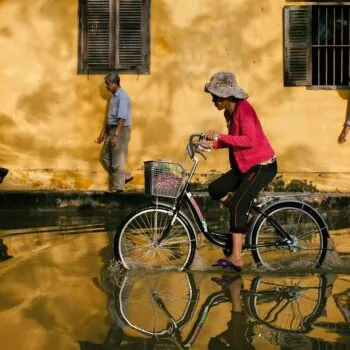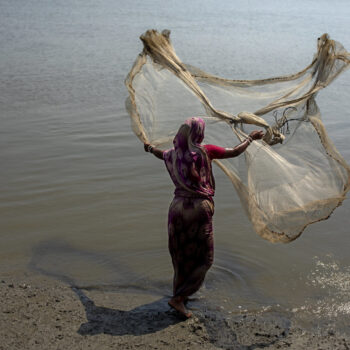The European Commission adopted its new EU Strategy on Adaptation to Climate Change on 24 February 2021. Building on the previous iteration released in 2013, the new plan positions adaptation as a key element of the European Green Deal.
It complements the EU’s ambitious goal to become climate neutral by mid-century and aims to ‘reinforce the adaptive capacity of the EU and the world and minimise vulnerability to the impacts of climate change’.
The Strategy also integrates the global goal on adaptation in Article 7 of the Paris Agreement and Sustainable Development Goal 13 action into EU law. The new strategy shows the EU is shifting its focus from understanding the problem of climate adaptation to developing solutions, and moving from planning to implementation.
Positive aspects of the EU Strategy on Adaptation to Climate Change
There is a lot to like. The Strategy proposes a set of actionable policies, embedded in a more mature vision of adaptation to climate change.
Making Adaptation more Systemic: The Strategy aims to make EU adaptation smarter, swifter and commits the EU to building a systemic approach to climate adaptation within the EU. It clearly underlines that adapting to climate change is ‘a whole-government and whole-society endeavour’, and that adaptation is a crosscutting element in the EU’s and Member States’ external action. The Strategy sets to support policy development at ‘all levels of governance, society and the economy and in all sectors by improving adaptation strategies and plans’. In this systemic approach, there are three cross-cutting priorities: integrating climate resilience in macro-fiscal policy, promoting nature-based solutions for adaptation and local adaptation action.
Accelerating Adaptation Diplomacy: Through the strategy, the EU is sending a clear signal to the world that climate adaptation should be viewed on a par with climate mitigation, and that the EU wants to lead by example. The Strategy states that for the EU ‘climate change adaptation ambition must match our [EU] global leadership in climate change mitigation’.
In particular, the EU is committed to more effective adaptation diplomacy conducted through a ‘humanitarian-development-peace nexus approach to reach the most exposed, vulnerable, conflict-prone or marginalised communities’
To achieve this, the EU aims to enhance international efforts for adaptation and increase resilience. In particular, the EU is committed to more effective adaptation diplomacy conducted through a ‘humanitarian-development-peace nexus approach to reach the most exposed, vulnerable, conflict-prone or marginalised communities’. Recognising that climate adaptation is an existential task in vulnerable countries, the Strategy emphasises that the EU will promote sub-national, national and regional approaches to adaptation, with a specific focus on adaptation in Africa and Small Island Developing States (SIDS), and Least Developed Countries (LDCs).
Anchoring Climate Security: The Strategy underscores the importance of climate security and the EU’s increasing support for international climate resilience and preparedness. Climate change and security are interrelated; climate change multiplies the threats to international stability and security, which affect in particular people in already fragile and vulnerable situations. Adaptation action can be a valuable tool in conflict prevention and mediation. The Strategy purports that adaptation strategies and programmes should be designed in a conflict-sensitive way to avoid aggravating tensions.
To increase climate resilience globally, the EU would support partner countries to adapt to climate change by implementing comprehensive risk management approaches, through national or subnational adaptation and climate-resilient policies, in synergy with disaster risk management and environmental and social policies.
Crucial to progress on adaptation is identifying new and innovative financial resources for adaptation and resilience.
Increasing Adaptation Finance: The Strategy also commits the EU to scale up international finance to build climate resilience and to close the gap in international climate finance more broadly. The Strategy sets out that focusing on the green transition in the Recovery and Resilience Facility and the next generation Cohesion Policy programmes provides an opportunity to frontload investments and reforms that can help increase resilience to climate shocks as well as accelerate the decarbonisation of the economy. Crucial to progress on adaptation is identifying new and innovative financial resources for adaptation and resilience. The EU aims to scale up resources and further mobilise larger-scale adaptation finance, including through innovative mechanisms and leveraging resources in bilateral channels and through the EU Member States.
Racing to resilience
The adoption of the new EU Adaptation Strategy is one of the key steps in European and international efforts to enhance global ambition and action for climate resilience. Adaptation is a dynamic, multifaceted, learning-by-doing process that requires undeterred efforts of constant policy adjustment. The implementation of the EU Adaptation Strategy should factor in the following two considerations:
Mind the implementation gap: Climate adaptation implementation is inherently contextual. The EU should integrate the EU Adaptation Strategy with specific EU Member States’ national and local adaptation pathways, as well as catalyse more cooperation on adaptation amongst its Member States. Adaptation goals at the EU and Member States’ national level need further clarification to enable precise targets and specific adaptation measures. Cooperation of EU Member States in terms of sharing ideas and information to increase adaptation capacity in a holistic way will be vital to ensure actors across governance levels and policy sectors possess the tools to operationalise adaptation and manage climate risk.
Adaptation is a dynamic, multifaceted, learning-by-doing process that requires undeterred efforts of constant policy adjustment.
Build resilience partnership: The international component of the EU Adaptation Strategy is one of the salient areas that shows the EU is shifting from adaptation planning to adaptation implementation. The core of EU external action on adaptation is the economic, environmental and societal development model of the UN Sustainable Development Goals and the European Green Deal. The EU should leverage key moments in the diplomatic calendar and high-level events of 2021 to position the new strategy and build partnerships around strengthening resilience.
Important dates to accelerate action and support for adaptation include the Climate and Development Ministerial hosted by the United Kingdom on 31 March, where countries and multilateral institutions will come together to identify practical steps to support the delivery of the Paris Agreement and Agenda 2030 for Sustainable Development in the world’s most climate vulnerable countries and communities. The upcoming fifteenth meeting of the Conference of the Parties (COP 15) to the Convention on Biological Diversity (CBD) in China would be an optimal opportunity to explore the role of nature-based solutions for climate change adaptation. Per UNEP’s Adaptation Gap Report 2020, nature-based solutions for climate change adaptation ‘restore, build on and enhance ecosystem services in order to manage climate change risks and impacts, help people adapt to climate change, and enhance the climate resilience of communities, assets and society’.
Equipped for action
The hard work of implementation now begins, and the proof will be in the pudding. For example, the EU needs to make sure that the insurance mechanisms proposed actually deliver benefits to the most vulnerable countries. But the new Adaptation Strategy offers a beacon of hope in the too-often doom and gloom of climate conversations. As Executive Vice-President for the European Green Deal, Frans Timmermans said: ‘There is no vaccine against the climate crisis, but we can still fight it and prepare for its unavoidable effects. The impacts of climate change are already felt both inside and outside the European Union. The new climate adaptation strategy equips us to speed up and deepen preparations. If we get ready today, we can still build a climate-resilient tomorrow’.
Image by Damian Patkowski on Unsplash.
This project has received funding from the LIFE Programme of the European Union.



